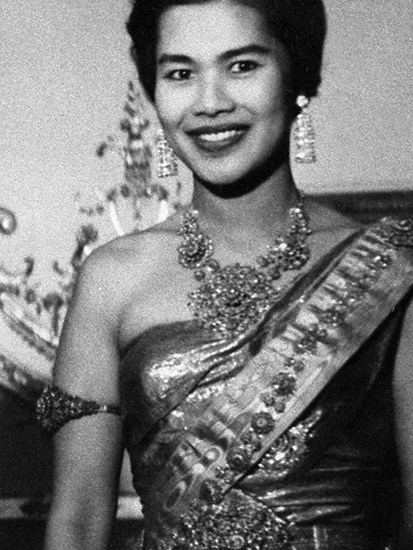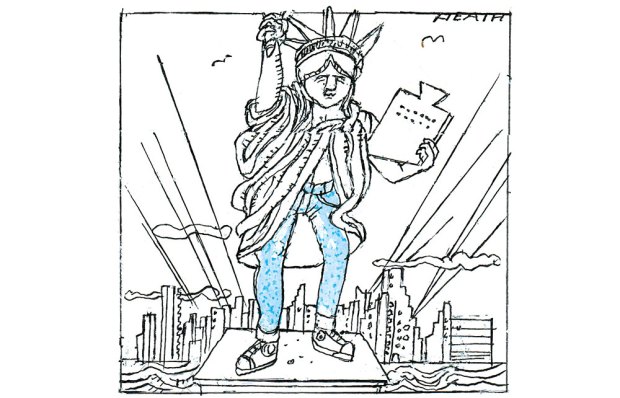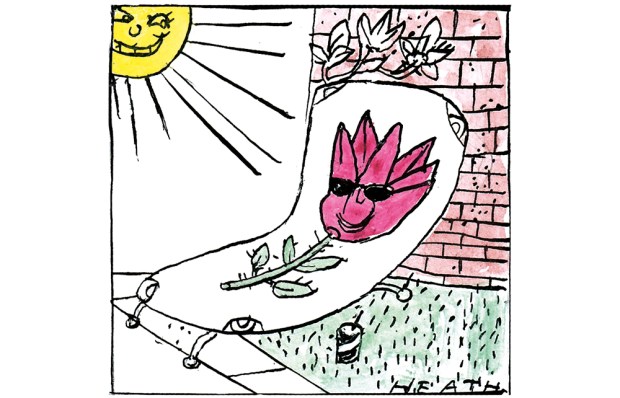Last time I went to Thailand, there’d been something of a misunderstanding about accommodation, and my friend and I ended up in a dive on Khao San Road. In a grim room with stained mattresses and peeling paint, the thud of beats from the disco made everything vibrate gently. Stalls outside offered fake IDs, tatty souvenirs and novelty edible insects. I’m not averse to eating crickets, but these ones needed embalming fluid, not cooking oil.
So we took a tuk-tuk across town to the Grand Palace, just seeking a break from sunburned students in short shorts drawling about full-moon parties. Instead, what happened next was one of the highlights of the trip. In a courtyard, past the gold domes, the jewel-encrusted statues and the emerald Buddha, we stumbled across the Queen Sirikit Museum of Textiles.
The museum opened in 2012 after Queen Sirikit, now 83, asked her husband, the superbly named King Bhumibol Adulyadej, if she could use the Ratsadakorn–bhibhathana Building, the former Ministry of Finance, for a silk museum. Some monarchs would simply have been angling for an overflow wardrobe, but she hired curators from the US and made something rather more serious. Visitors receive a vivid description of the silk-making process — larvae and all — as well as guides to the various techniques used in Thailand. There are plenty of traditional Thai dresses: chakris, dusits and tai dams galore.
Then there’s a more personal story. Travelling around the countryside in the 1950s, Queen Sirikit saw that the tough work of weaving was an important way for women to earn a living — as well as an endangered piece of Thai heritage. She used the clout of her role to give the fabrics a global showcase. Pierre Balmain made her a series of western evening ensembles using silk ikat, cotton brocade from Had Siew and plenty of glittering rhinestones. Embroidery was done by House of Lesage, and Rene Mancini found time to make matching shoes when he wasn’t busy working for Chanel or Givenchy. She wore these ensembles to the White House, gala evenings at the Metropolitan Museum, and to host Princess Margaret in Thailand.
Her patronage of the silk industry helped win Queen Sirikit both a UN award for improving women’s welfare and a reputation for glamour. Alongside the dresses, the museum displays vintage magazine spreads placing the young Thai royals alongside Princess Grace of Monaco, the Kennedys and lots of stunning evening gowns.
This little gem of a museum concludes with a cracking gift shop, where you can splurge on silk scarves, table runners and handbags. And, as a bonus, in the middle of the humid chaos of Bangkok, the whole building is very, very well air-conditioned and quiet. We left content and ready to float our way to cocktails overlooking the river and a dinner of spiced, perfumed sea-bass. As introductions to Thailand go, it’s less a rough guide, more smooth as silk.
Got something to add? Join the discussion and comment below.
Get 10 issues for just $10
Subscribe to The Spectator Australia today for the next 10 magazine issues, plus full online access, for just $10.
You might disagree with half of it, but you’ll enjoy reading all of it. Try your first month for free, then just $2 a week for the remainder of your first year.














Comments
Don't miss out
Join the conversation with other Spectator Australia readers. Subscribe to leave a comment.
SUBSCRIBEAlready a subscriber? Log in